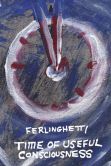Apocalypse Z: The Beginning of the End
Manel Loureiro
Trade Paperback
333 pages
Publisher: AmazonCrossing
Publication Date: October 23, 2012
ISBN-13: 978-1612184340
Advance Reader’s Copy – Uncorrected Proof
More zombie goodness…
Normally I keep extensive notes when reading so that I can use those notes to develop my review of the book based on my “in-read” impressions. In the case of Manel Loureiro’s Apocalypse Z: The Beginning of the End there just wasn’t time. I became so engrossed in the story, so entertained, that I neglected (plain forgot) to keep a single note on the story. Here’s why that’s a good thing: 1) The story grabs you from the start and doesn’t let go until the last word. 2) In a word, Realism – The story, characters, and scenes are very realistic in every sense of the word. Yes, we are talking about zombies here but insert “ambulatory plague victim” and it still works on every level. 3) Very Fast Read – Apocalypse Z is an extremely fast paced story and therefore a very quick read. I think I read it in just under eight hours. 4) Settings – All the action is set in Spain and on boats off the coast and that lends an unusual European feel to the zombie situation. I thoroughly enjoyed the locales that were so very different than those found in most of the zombie stories I’ve read. 5) Zombies – It’s another freaking zombie story! (Period.) 6) The main character could be you or I – Mr. Loureiro’s zombie apocalypse survivor is an everyman. Not a hero, not a macho, over-the-top caricature of a survivor but the embodiment of the normal man attempting to survive in a harsh and dangerous environment. He makes mistakes and he pays for those mistakes and that’s what makes this character and the entire story so compelling.
The book begins as a blog from a lonely man in Spain who’s just recently lost his wife and is looking for something to keep his mind occupied. But some very strange stories are coming out of Russia. Little by little the story unfolds that something has escaped a government facility and a pandemic is spreading. What would you do under the circumstances? Where would you go? For one man, the search for a “safe” place is not only a quest but an inward journey for survival.
If there’s any negative criticism I can make it’s that the story touched very little on the fall of civilization and the wake of societal disorder. Obviously, the story is about the personal journey of one man but by making him a blogger reporting on the fall of mankind I thought the concept could have been better developed and carried through more in the story.
File with: All the other good zombie books you’ve ever read!
4 out of 5 stars
The Alternative
Southeast Wisconsin
Additional Reading:
Apocalypse Z: The Beginning of the End Amazon Page
Apocalypse Z: The Beginning of the End Audiobook
About The Author: Manel Loureiro (Spain, 1975) has a degree in Law from the University of Santiago de Compostela (Galicia). Combining his studies in this historical city with some television projects, he was an anchorman for various television programs. From writing screenplays he discovered his interest for writing. His first novel Apocalypse Z has been an immediate success and cult phenomenon on the internet. It has had hundreds of thousands of readers worldwide. Apocalypse Z, Dark days, the sequel with the same heroes and their fight to survive in a world dominated by the Undead, has won Manel Loureiro the title of the first author of terror zombie novels set in Spain.










